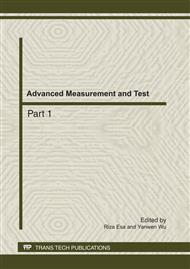p.60
p.67
p.73
p.80
p.87
p.93
p.99
p.104
p.109
Simulation of Temperature and Stress Field of Titanium Alloys under Laser Cladding
Abstract:
Titanium alloys which exhibit excellent material properties like a high strength to weight ratio and good corrosion resistance have become the important structural materials in the applications of the aerospace. However, it’s quite difficult to repair the damages of the titanium alloy parts such as fatigue crack and erosion resulted from poor working environment using the traditional manufacturing technology while the problem can be easily solved with the help of laser cladding technology. For the excellent quality of the fixed parts, it is extraordinarily significant to obtain the rule of the temperature and thermal stress distribution in the cladding process. To investigate the influencing rule of cladding coating's temperature and stress on laser cladding process parameters, the model of laser cladding based on TC4 titanium alloy is built by the way of finite element method (FEM). This model encompasses the effects of the temperature-dependent thermal conduction and radiation as well as the latent heat of fusion. Different laser processing parameters are chosen to calculate the temperature and stress of cladding layer.The result shows that the temperature of the clad coating is positive correlation with the raise of laser power and the depth of the powder layer, and negative correlation with the raise of scanning speed and the laser spot diameter. In addition, the transient stress of clad coating is augmented with the increase of laser scanning velocity, laser spot diameter and the depth of the clad coating while it’s negative correlation with the raise of laser power. The numerical results provide the theoretical guidance for optimization of the laser cladding parameters on TC4 titanium alloy.
Info:
Periodical:
Pages:
87-92
Citation:
Online since:
July 2011
Authors:
Keywords:
Price:
Сopyright:
© 2011 Trans Tech Publications Ltd. All Rights Reserved
Share:
Citation:


